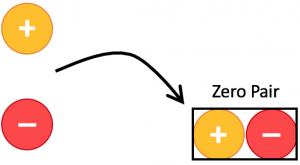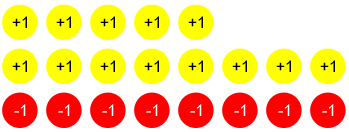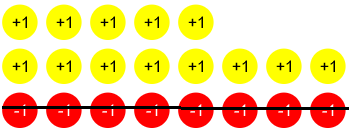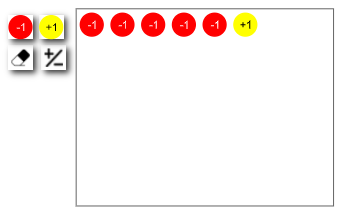
Subtracting Integers Using Integer Chips
Concept
The term “integer” was adapted in Mathematics from Latin. Integer means intact or whole. Integers are very much like whole numbers, but they also include negative numbers among them. For example, 11, 8, 0, and −1908 are integers whereas √5, Π are not integers. The set of integers consists of zero, the positive natural numbers, and their additive inverses.
Subtraction generally means to decrease the value. But, in the case of integers, a subtraction operation might lead to an increase or decrease in the value of the given number. If we subtract a negative integer from a number, the value of the given number will increase and if we subtract a positive integer the value will decrease.
When modeling integers, we can use colored chips to represent these integers. One color can represent a positive number and another color can represent a negative number. Here, a yellow chip will represent a positive integer and a red chip will represent a negative integer. A zero pair is the pair of the positive and negative form of the same number.

Rules
1. Model the minuend using integer chips. If the minuend is positive, use yellow chips. If the minuend is negative, use red chips.
2. Remove as many chips as indicated by the subtrahend. If the colored chips of the subtrahend are not present, create zero pairs and then subtract.
Example
Subtract.
5 – (-8)
Solution
1. The yellow chip represents positive 1. Use 5 yellow chip to represent 5.
![]()
Remove 8 red chips. But as we can see, there are no red chips, add 8 zero pairs.

We can now easily remove 8 red chips.

Next, count the remaining chips to find the answer. In this case, there are thirteen positive yellow chips left. Thus, the answer is +13 or 13.

Practice Subtracting Integers Using Integer Chips

An integer is a number with no decimal or fractional part, from the set of negative and positive numbers, including zero.
Positive Integers: An integer is positive if it is greater than zero. Example: 1, 2, 3 . . .
Negative Integers: An integer is negative if it is less than zero. Example: -1, -2, -3 . . .
Zero is defined as neither negative nor positive integer. It is a whole number.
A zero pair – A pair of the positive and negative form of the same number.
Absolute value – the positive distance that a number is from 0 on a number line.
Additive inverses – two integers that are opposites.
Integer chips – Are colored chips with signs. One color represents a positive number and another color represents a negative number.
Pre-requisite Skills
Integers and Absolute Value
Order of Operations
Adding Integers




